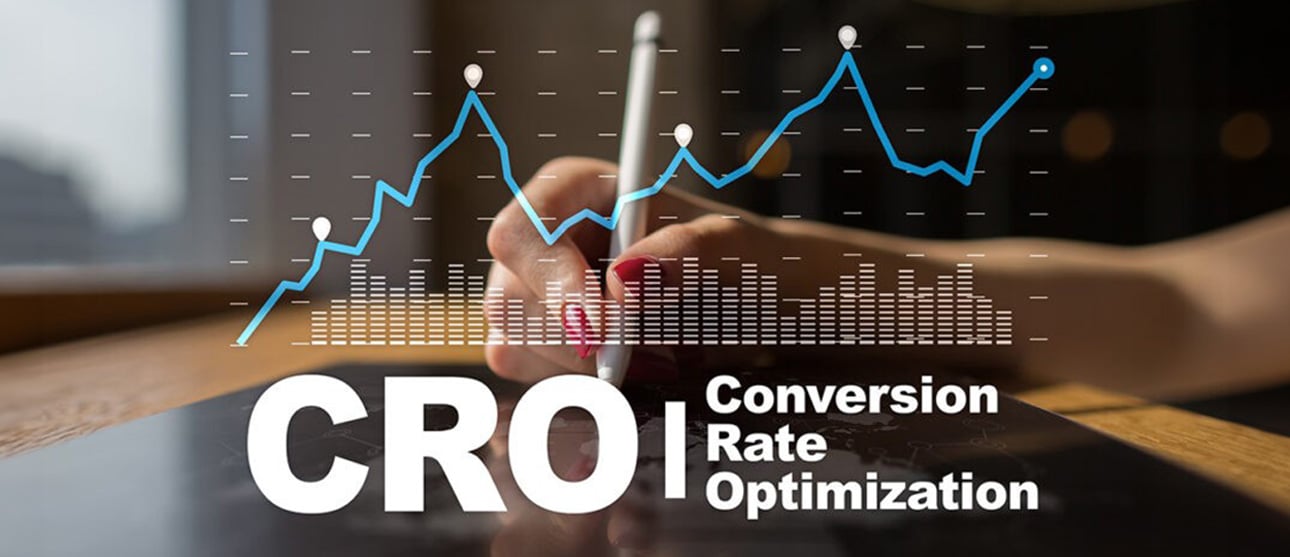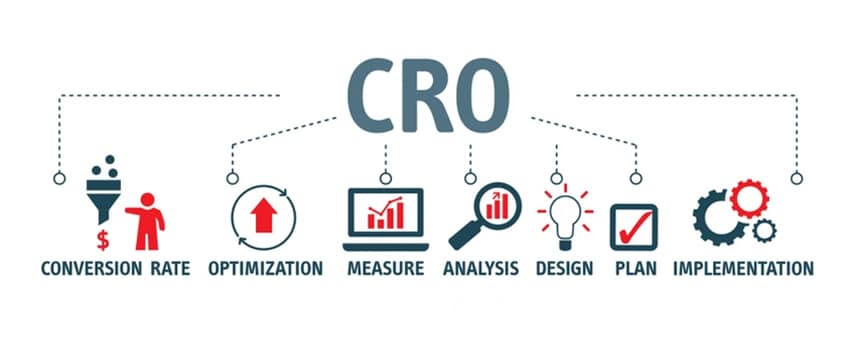
CRO, or Conversion Rate Optimization, is the process of enhancing the design of a website or form by raising the percentage of its visitors who take up a desired action, such as making a purchase, signing up for a newsletter, or filling out a contact form.
Conversion Rate Optimization is an essential process for businesses striving to turn website visitors into paying customers. It involves analyzing user behavior, tweaking elements of your site, and running tests to improve the overall user experience. By systematically improving conversion rates, businesses can maximize their marketing efforts, increase revenue, and drive sustainable growth.

- Conversion Rate: This is the percentage of visitors who complete the desired action out of the total visitors to a website.
- Conversion Optimization: It’s the process of using data and analytics to optimize a site’s performance to achieve the best possible conversion rates.
- Meaning of CRO: In the realm of digital marketing, CRO is about getting more value from your existing traffic rather than solely relying on driving more visitors. It focuses on identifying and removing barriers that prevent users from converting.
- Importance of CRO: CRO is important for businesses in which one wants to extract greater value from his or her marketing effort without having to invest heavily in generating new traffic; thus, it enhances the user experience, fosters trust, and therefore lifts the bottom line.
The Key Components of a Successful CRO Strategy
To build a successful CRO strategy, you need to focus on various elements of your site and customer experience:
- Conversion Funnel: You need to understand the ways in which users are navigating your site and what the users are doing at every stage of the customer journey. A well-optimized funnel takes users all the way from awareness to the final conversion without dissolving into one single chunk.
- User Experience (UX): Good CRO starts with a positive user experience. If users find your website difficult to navigate, confusing, or slow, they will abandon it before converting. Optimizing for UX involves making sure the site is user-friendly, intuitive, and responsive on all devices.
- Landing Page Optimization: Your landing page is often the first interaction a visitor has with your brand. Ensuring that it is optimized with a clear call-to-action (CTA), fast load times, and compelling copy is essential for improving conversion rates.
- A/B Testing: This method involves running experiments on two or more versions of a webpage to determine which version leads to higher conversions. Testing different headlines, layouts, or CTA buttons can reveal valuable insights about user preferences.
- Customer Journey Mapping: Understanding the full customer journey, from initial touchpoint to conversion, is crucial. Mapping out this journey allows you to identify friction points and opportunities to enhance the user experience.
Common Mistakes in CRO and How to Avoid Them
CRO can be a complex process, and many businesses make mistakes that hinder their success. Avoiding these pitfalls is key to running an effective CRO strategy:
- CRO Pitfalls: Many people focus on the conversions without knowing those visitors who are visiting their site. Lack of user insight can lead your efforts in areas that are not very productive at all.
- Optimization Errors: Businesses often fail by making assumptions rather than relying on data. Every decision should be data-driven, using insights from analytics tools, customer feedback, and testing.
- Ineffective A/B Testing: Many companies launch A/B tests but don’t run them long enough to gather statistically significant data. Or, they may test too many variables at once, which makes it difficult to determine what is driving the results.
- Neglecting Mobile Users: It is sad that while mobile traffic is a massive proportion of any business, most businesses do not give mobile users due consideration. To target this group, make sure your site is mobile-friendly, fast and responds to the touch appropriately.
- Overlooking Analytics Data: Data from tools like Google Analytics provides deep insights into how users behave on your site. Ignoring this data or failing to act on it can limit your CRO success.
Tools and Software to Enhance Your CRO Efforts
To implement CRO effectively, there are numerous tools and software available that can help analyze user behavior and test improvements:
- CRO Tools: Tools like Optimizely and VWO help businesses run A/B tests and personalize user experiences based on data.
- Analytics Software for Conversion Rates: Google Analytics and Adobe Analytics provide comprehensive insights into visitor behavior and help identify areas for improvement.
- Heatmap Tools: Heatmaps from tools like Hotjar and Crazy Egg visually represent where users are clicking, scrolling, and spending time on your site. This data can be invaluable in identifying friction points.
- User Feedback Tools: Tools like Qualaroo and SurveyMonkey gather real-time user feedback, helping you understand why visitors may not be converting.
- Split Testing Software: Platforms like Unbounce allow you to create different versions of landing pages and run split tests to see which performs better.
Real-Life Case Studies: Successful CRO Implementations
It is worth taking a look at other similar enterprises to achieve motivation for creating a good CRO plan. Here are a few real-life examples of businesses that saw significant improvements through CRO:
- CRO Success Stories: A well-known e-commerce company saw a 20% increase in sales by optimizing its checkout process, reducing steps, and offering guest checkout options.
- Case Studies on Conversion Rate Improvement: A software company increased trial sign-ups by 15% after running A/B tests on their pricing page, simplifying the layout and making pricing plans more transparent.
- Businesses Improving Conversions Through Optimization Strategies: By using customer journey mapping and heatmaps, a digital marketing agency was able to reduce bounce rates and increase lead conversions for a client’s website by 30%.
Take Action Now to Boost Your Conversion Rates with Effective CRO Techniques!
Conversion Rate Optimization (CRO) is a powerful tool for businesses looking to maximize the value of their website traffic. By focusing on improving user experience, optimizing landing pages, running A/B tests, and leveraging data, businesses can significantly boost their conversion rates and improve ROI.
For these reasons, the ultimate goal of businesses must be a high degree of refining relating to their websites to ensure they maximize conversion rates. Conversion rate optimization is not a one time affair but it is a continuous trial and error process wherein the professionals apply new changes from time to time after analyzing various results from the past. Thus, by paying special attention to the quality of specific user experience, choosing the proper instruments, and eliminating the mistakes shared businesses can achieve considerable progress in conversion rates and the output from traffic.
The essence of CRO can be summarized in consistency of testing, analyzing, and applying changes that would be effective. Do not wait, start improving your website today with these approved techniques and resources for increased conversions and more sales. That is why with the correct approach to your business you will get good results and you will successfully build your business.
Take action now—implement CRO strategies to enhance your site, engage visitors, and turn clicks into conversions. With the right approach, your business can achieve impressive results and a higher ROI on all marketing efforts.




